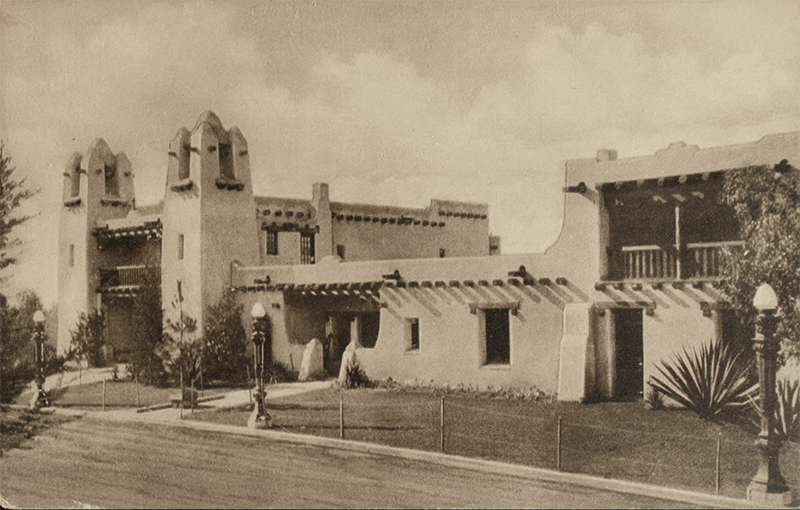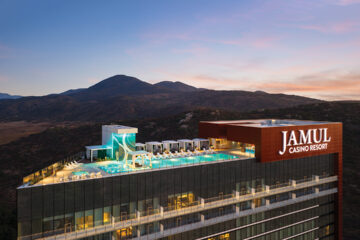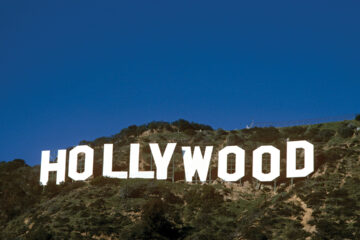Balboa Park: New Mexico State Building

New Mexico State Building
Contemporary visitors to Balboa Park know the Balboa Park Club as an unpretentious Pueblo and mission-influenced building with large, attractive meeting rooms and a historical mural and fountain. Those who used it in the 1950s remember that too, plus a handy on-site food service, a feature that ended long ago. San Diego Junior Theatre’s offices and rehearsal rooms were also there in the ’50s, on the lower west end floor. Originally built for the 1915 Panama-California Exposition and named the New Mexico State Building, this structure is particularly interesting because it is located in the southwest end of Balboa Park and is not in the Spanish Colonial Revival style of El Prado buildings.

Historian Richard Amero called the New Mexico building “the most innovative of the state buildings.” The southern area, now known as the Palisades, is the spot where most of the state buildings were erected. While seven states chose to contribute buildings to the fair, only California and Nevada were not on the Palisades. For inspiration, the New Mexico Building reportedly took its cues from the Mission of San Estevan of Acoma, New Mexico, built in 1529. Design and construction were supplied by the Rapp Brothers of Trinidad, Colorado. Observers have noted the rough and irregular walls of the structure, a hallmark of the Pueblo style. The structure was so impressive, in fact,it actually influenced the architecture of important buildings in Santa Fe and Albuquerque.

The 1915 New Mexico Building went through many permutations over the years. It was used as an art center in the 1920s and was then greatly enlarged for the 1935-36 Exposition. During that 1935 California Pacific International Exposition the building was renamed the Palace of Education. An imposing mural by Belle Baranceanu, added for 1935, is on the west end wall of the entrance area. Baranceanu was a locally-based artist regionally recognized in the art world. Her stunning piece was very much in the style of 1930s WPA work. But that impressive mural was not present in the original 1915 New Mexico Building. It came later. This building was the last Navy-occupied Balboa Park structure to be returned after World War II. In 1948, the building was again renamed, this time as the Balboa Park Club, and to the relief of many, the name has remained the same ever since. DARLENE G. DAVIES

» At the time the New Mexico Building opened in 1915, it had been less than three years since New Mexico was granted statehood.
» Planners of the exposition had expected many states to sponsor buildings in 1915. A 1911 map shows buildings for Arizona, Colorado, Oklahoma, and Texas. After San Francisco’s competing Panama-Pacific International Exposition was named the “official” exposition, these states elected to go north, bypassing San Diego. The eventual San Diego tally included seven state buildings: California, Nevada, Kansas, Utah, Washington, Montana, and New Mexico.
» The New Mexico Building is one of only two surviving state buildings in what is now the Palisades area. The other is the heavily-modified Kansas State Building, now the Hall of Nations/House of Italy.
» Present-day visitors to the Balboa Park Club are likely unaware that the large assembly hall where most functions occur wasn’t part of the building until 1935, when it became the Palace of Education. Architect Richard Requa designed the remodel and utilized heavy-timber trusses recycled from demolished 1915 buildings. An original open-air patio at the center of the building was roofed-over at that time to create more exhibit space. A sculpted fountain called “The Four Cornerstones of American Democracy” was also added to the patio in 1935. DAVID MARSHALL, AIA
Historic images courtesy of David Marshall, AIA and the Panama-California Exposition Digital Archive
Directory
The Great Panama-California Exposition
1915 Panama-California Exposition
Spreckels Outdoor Organ Pavilion
Gardens of the Panama-California Exposition
Legacy of the Foreign Arts Building
Panama-California Sculpture Court
Commerce and Industries Building





Comments